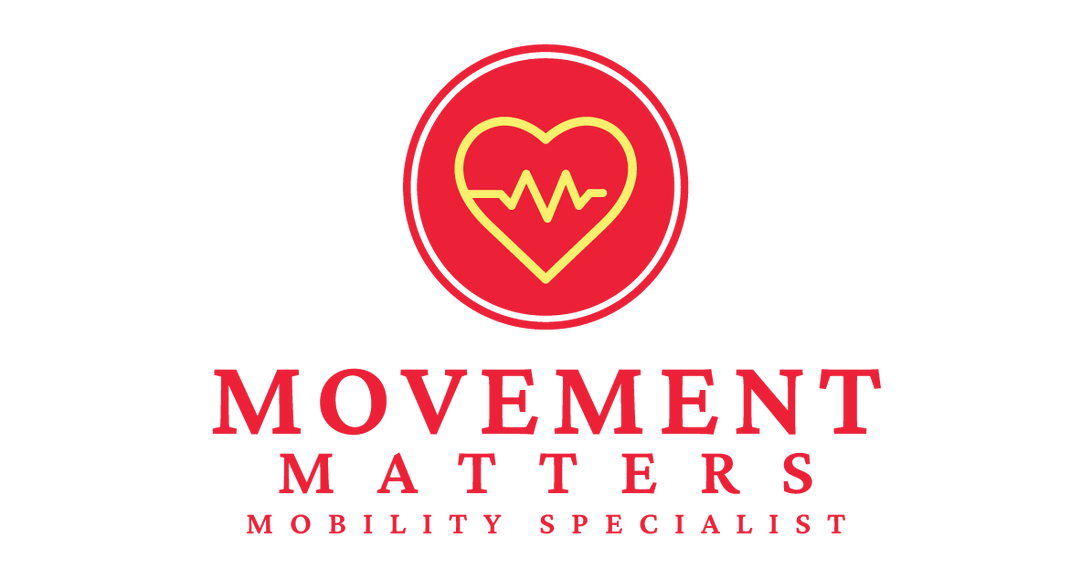Our Different Mobility Solutions
Step 1: Self-Myofascial Release (SMR)
Self-Myofascial Release (SMR) is where your mobility journey begins. As the first step in the Movement Matters mobility process, SMR helps reduce tension, improve tissue quality, and restore efficient movement by targeting the fascia — the connective tissue that surrounds and supports your muscles and joints.
Using tools like foam rollers, massage balls, or mobility sticks, SMR applies controlled pressure to areas of restriction, helping to release tightness and improve blood flow. It's simple, effective, and something you can do on your own.
We like to call it the epitome of "productive discomfort." It may not always feel great in the moment, but it sets the stage for everything that follows-unlocking your body's potential for better movement, better function, and better results.
Step 2: Targeted Soft Tissue Work With the Hypervolt
At Movement Matters, we incorporate the Hypervolt by Hyperice into our sessions to deliver targeted percussion therapy. Nick likes to call it the "muscle tenderizer" — and for good reason. This powerful yet quiet tool helps loosen up tight tissue, improve circulation, and enhance overall muscle quality.
By using the Hypervolt before assisted stretching, we create a more effective and comfortable experience, helping your body move with greater ease and range. It's a key step in preparing your body for meaningful, lasting mobility work.
Step 3: Assisted Joint Stretching
This is the meat and potatoes of the Movement Matters approach. In this step, we go beyond surface-level stretching and work deep into the joints - most notably the hips, shoulders, and ankles- to unlock meaningful mobility where it matters most.
Using precise, hands-on techniques, we target not just the hardware of the body (muscles, tendons, and joints), but also the software — your nervous system's control over how and where you move. This is where the real change happens.
This part of the process also helps decompress the “victims” of the body — areas like the neck, back, and knees that often suffer from tightness elsewhere. And let's be honest: less compression = less feeling old and tight.
Assisted joint stretching allows us to guide your body safely and effectively through ranges it may not reach on its own, improving not just flexibility, but also control, coordination, and long-term function.
Step 4: Corrective Exercise Strategies
This phase of the Movement Matters mobility process focuses on reinforcing better movement and alignment through corrective exercise.
Grounded in the principles of the National Academy of Sports Medicine (NASM), these strategies may seem subtle, but they create significant change. We target key stabilizing muscles- especially the glutes, core, and mid-back - that often go underused due to poor posture or inefficient movement habits.
By retraining proper muscle recruitment and coordination, we help your body maintain the mobility gains achieved in earlier steps. This leads to improved alignment, balance, and functional strength, setting the stage for more efficient movement in everyday life and activity.
Step 5: Functional Training
This step is where movement meets real-world strength. Functional Training at Movement Matters isn't just about lifting weights - it's about training your body to handle the demands of daily living with strength, control, and confidence. Inspired by the principles taught at Mike Boyle Strength and Conditioning (MBSC), this approach focuses on movement quality first, then builds capacity.
We train fundamental human movement patterns that apply directly
to everyday life and physical activity:
- Squat
- Lunge
- Hinge
- Push
- Pull
- Rotate
- Carry
While it’s not traditional personal training, this step bridges the gap between mobility work and functional performance. It’s about helping your body move well – and stay capable – for whatever life throws your way
